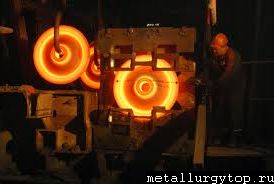Silver Jewelry History
 Asia Minor And Its History And Legends
Asia Minor And Its History And Legends
Legends are usually just that, legends. However, some legends have more truth than you might know. For the ancient Greeks, the legendary Caucasus Mountains marked the beginning of the ends of the Earth, and a fitting prison for the enemies of Greece. This is told in the tale of the Greek god Prometheus, who spent eternity chained to Mount Caucasus after stealing fire from Mount Olympus and giving it to mankind. But unlike the symbolism of Prometheus' tale, the Caucasus Mountains were, and still are very real.
Rich in Silver, the vast Caucasus mountain range stretches across present–day Armenia, Azerbaijan, Georgia and Turkey. In time, the Caucasus' silver, electrum, gold and gemstone laden rivers gave birth to legends of monsters and heroes. And like all legends, these tales have their symbolism firmly planted in reality. The heroes of one such symbolic tale were Jason and his crew of Argonauts who set sail from Greece in their boat the Argo, its name meaning 'Shining white metal.'
Jason's crew of Argonauts included Castor and Pollux, the brothers of the ill–fated Helen of Troy, and Armenos the first Armenian. Their quest was to capture the Fleece, which was the only payment Jason could use to win back his kingdom from his evil uncle Pelias. The Fleece was rumored to hang from an oak tree near the river Phasis, south of the Caucasus Mountains, in the Colchis region located along the eastern shores of the Black Sea. Jason's infamous adventures at the mercy of gods and monsters in search of silver and gold riches makes a compelling story, but it is only a window on an even more fascinating truth at the root of the legend.
Around 9500 to 9000 B.C., the world's climate changed, warming up and signalling the end of the last 'Ice Age.' This marked the beginning of the Neolithic period and the rise, although evolving at different times throughout the world, of organized communities. Neolithic communities domesticated livestock, irrigated land, and learnt process metallurgy, refining iron, copper, electrum, gold and silver into weapons, ornaments and items of jewelry.
Through archeology, it has been possible to document that the cradle of the first really organized Neolithic civilizations stretched out over an area from Anatolia in western Turkey, to the Arabian Gulf in the south and east, and the outer fertile ridge that stretched over the Caucasus Mountains to the north. Indeed, much of the gold, silver, electrum, tin and copper used in ancient rings, earrings, pendants and bracelets found throughout this area have been traced to alluvial deposits of rivers and streams that run through the Caucasus Mountains.
For the most part during this time metals used for jewelry were extracted from alluvial deposits, which is where silt–laden water from rainfall collects in rivers and streams after flowing over and eroding the rocks of surrounding hills and mountains. Most methods of searching out precious metals for jewelry depended on the human eye to pick out the gold and silver particles, but because the silver and gold particles were very small they were often washed away. An alternative method for extracting precious metals from these deposits was found by using the fleece of a sheep.
This was done by pouring the silver, gold and electrum bearing gravel over the woolen fleece. The lighter sand and rock particles washed away over the wool, but the heavier precious metal particles sunk into the wool fibers sticking to the lanolin, a naturally occurring oil that coats the wool. The gold and silver–bearing fleece was then hung on a branch and left to dry in the sun, after which it was burned in a high–temperature fire. The silver, gold and electrum particles melted, dropping to the bottom of the fire and after the fire was burnt out the metals were separated from the ashes.
This method was so successful it was used up until the 1930's to extract silver, gold and electrum from the Paktolas River in Anatolia, famous for King Midas' jewelry treasures and the minting of the worlds first coins used in monetary circulation: the Lydian Trite.
Read Silver Jewelry History That Became Legend Part III – The Lydian Trite
Read Silver Jewelry History That Became Legend Part I – King Midas
Copyright © SilverShake Corporation. All Rights Reserved.





Адрес заметки: http://metallurgytop.ru/post_1216384706.php
Рейтинг популярности - на эти заметки чаще ссылаются:
- 43 Герой социалистического труда
- 42 Известный телеведущий целую неделю снимал о Южном Урале
- 41 Первый чугун на каменном угле
- 39 Механизация очистки горновых канав
- 38 Замена конвейерных лент
- 36 Отработка верхнего шлака
- 34 Безотходное производство чугуна
- 33 Металлургия России: всем выйти из кризиса Читать полностью:
- 33 Ремонты чугунных и шлаковых канав
- 33 Системы программного управления